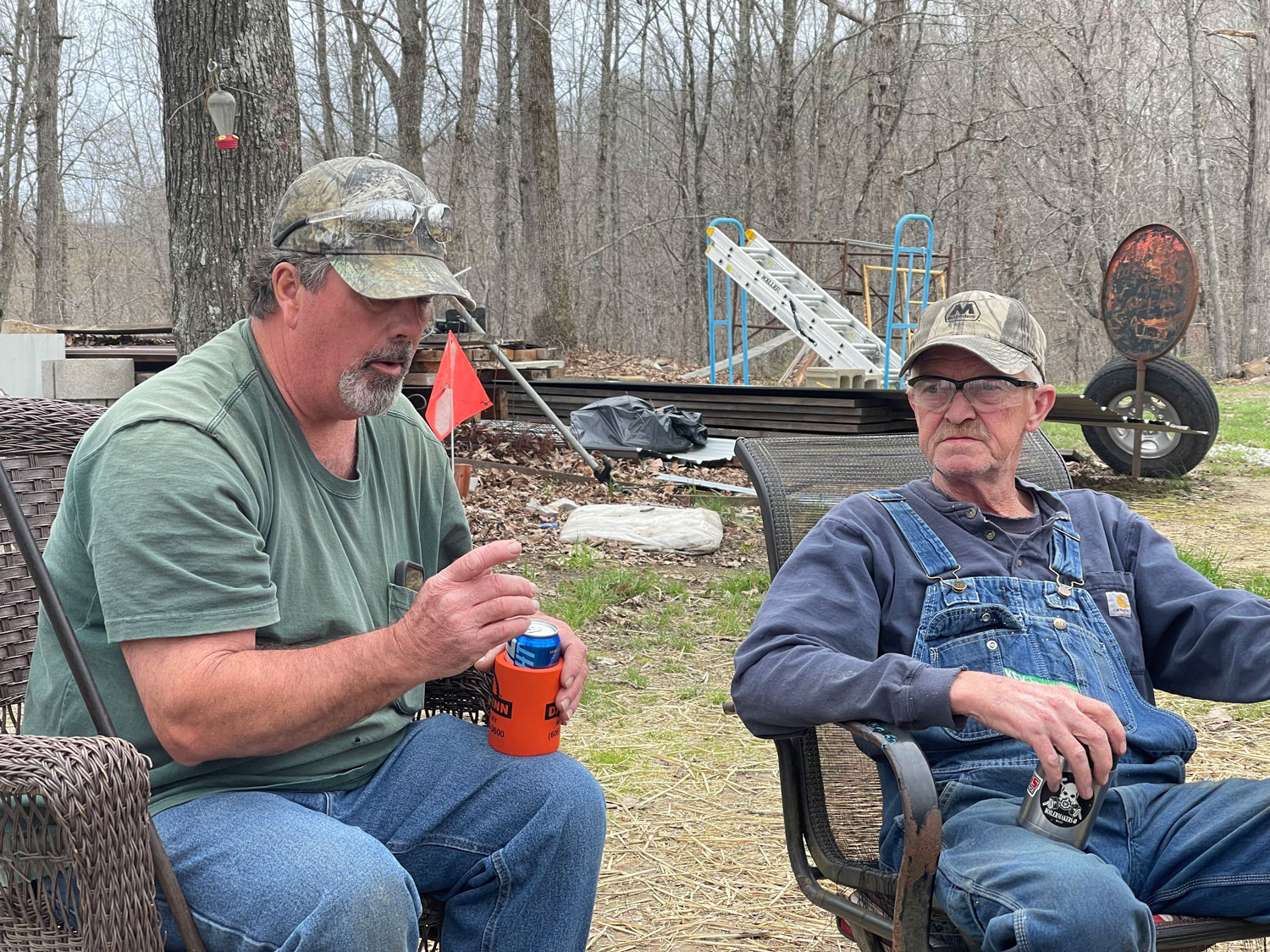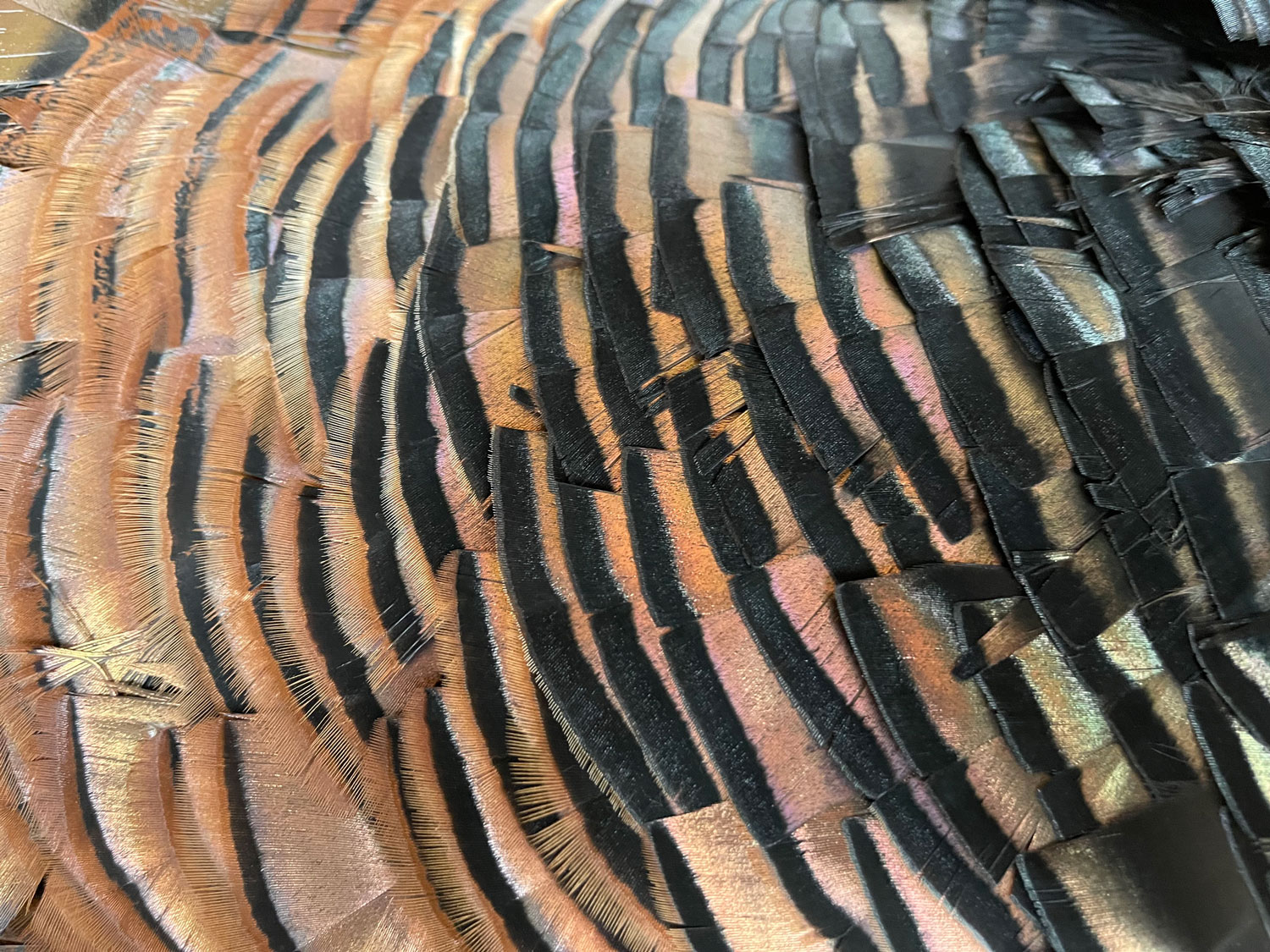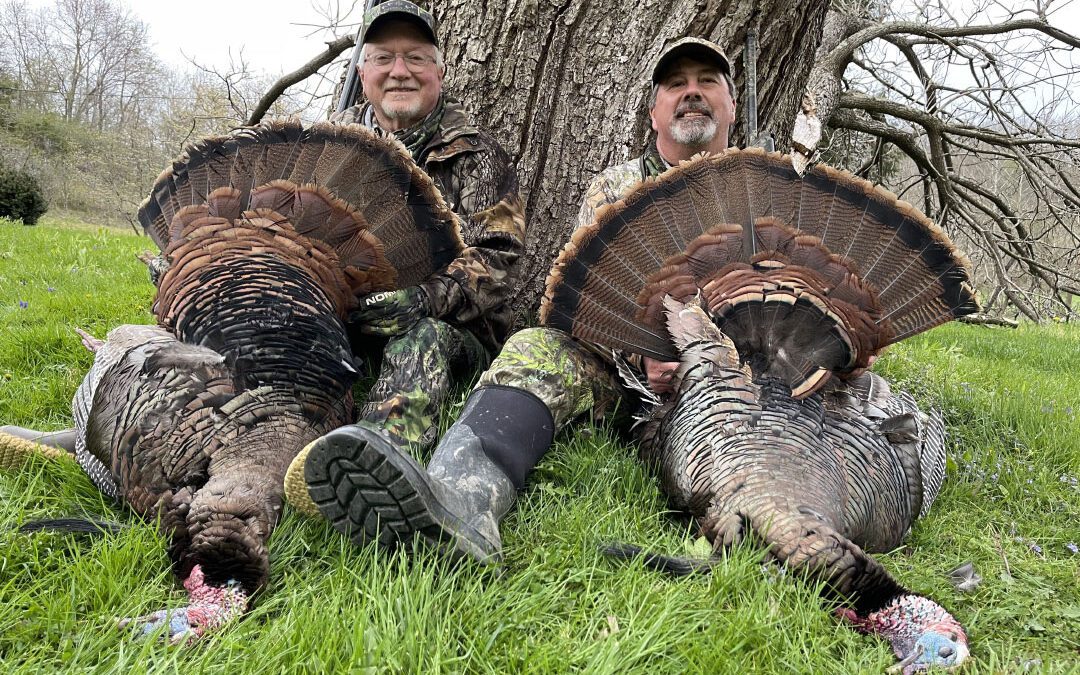Some 480 million years ago, plate tectonics waltzed the lapetus oceanic plate into what is today’s United States to form part of the supercontinent, Pangaea. For a hundred million years afterward, the Central Pangean Mountains lifted skyward, as high as the Alps. Then, Pangea split apart and the gigantic landmasses pirouetted away to form new continents with new partners. Scientists believe that, over time, there were several of these titanic, tectonic collisions; colossal impacts that folded the terrain like a ballroom gown thrown into a laundry hamper. Softened by eons of wind, rain and the relentless pull of gravity, the remnants of these mountains became the Appalachians. Beyond today’s humble rumpling of our East Coast states, you can find fragments of these mountains in places as far away as Scotland and Morocco.
West of our Appalachians, this clash of continents was more subdued; the bends, folds and rumples less pronounced. In Grayson, Kentucky, nestled not far from the mountains of West Virginia, these lesser peaks became hardwood-covered hills, having eroded over the millennia into small, flat-bottomed valleys that the locals call “hollers,” where today farmers grow hay and graze cattle. The cattle fertilize the fields encouraging the famous grass and, hence, seeds that attract birds. Spring is arriving in this beautiful place. Trees are beginning to bud. Pink dogwoods are flowering. And an ancient ritual has begun. This is where the turkeys come to dance.

It’s early morning, dark, damp and chilly here in Blizzard’s Holler. I’m sitting in a Double Bull domed-shaped ground blind with Chris Prince who, along with his 91-year-old father, own the farm where we are hunting. This is our second day. The first day, over on Issac’s Holler, we saw lots of turkeys from an old horse trailer repurposed as a blind, but could not get a decent shot at the cautious birds. Thanks to Nomad, who put on this hunt, I’ve got on clothing up to the task of keeping me warm. While I’ve always been partial to the comfort of cotton, Nomad’s shirts, pants and jackets are a far cry from the uncomfortable, sweat-inducing synthetics that I’ve tried before. Frankly, I was surprised. This stuff keeps you warm, and actually breathes. Not only that, it stretches with you when climbing, bending and stooping. Unlike cotton, which can restrict movement, I didn’t tire at all carrying my heavy pack and 12-gauge over-under Ruger nearly a mile to the blind. Best of all: You can sit for hours in a camp chair without cramping your crotch.

The cows come to visit. Curious as to why Chris and I have crawled into this strange little hut at the edge of their field, the cows push on the camo fabric, stick their drooling noses in all the open windows, eyeing us as if questioning our sanity for not bringing them food. They hover around for an hour. About daylight, they lose interest and wander off.
Twenty-two yards in front of us, we’ve staked a jake and two hen decoys into the oh-so-green grass. A hundred yards farther out, I can see a group of six turkey hens scratching and pecking in the grass. Fifty yards farther up the hill from the hens, hidden among the hardwoods, a gobbler is calling, inviting the hens to a two-step. Right now, the girls are acting aloof, however. Strangely, one of the lighter-colored hens sports an eight-inch beard. Not that there’s anything wrong with that. Her feathers appear to be a slightly lighter, gold color. Chris is shocked. He’s lived here 50 years, and this is the first one like this he’s ever seen.
“How long has your family owned the farm?” I ask quietly.
“Since the 1960s. My dad was a born entrepreneur. When he was eight years old, during World War II, he began shining shoes and selling newspapers,” Chris whispers between the yelps and gobbles emanating from his box call. The girl birds don’t seem attracted to our decoys at all. More interested in food than fun, they continue milling about the old feeder far up the hill. Out of sight, the gobbler doubles down on his efforts at pulling them in the opposite direction.
Chris continues our near silent conversation, “Dad was successful from the very beginning. And it wasn’t long before he bought up most of the routes convincing other boys to sell papers for him. At that point, he was controlling much of the newspaper’s distribution. After high school, he went to work for Ashland Oil, then got into selling propane, becoming an Eastern U. S. Field Manager. That job kept him away from home and family, which he didn’t like at all. Mom was a schoolteacher. Like his own father, Dad also bought and sold cattle, so he began acquiring farms to accommodate his growing cattle operation. Eventually, he started his own propane company. He sold that a few years ago.”
It becomes obvious that Chris is very proud of his mom, dad, wife and son, Christopher, who is in college studying to become an attorney. You can’t help but like a man who loves his family this much. Chris is also proud of his community and his neighbors.
Our arrival the day before turkey season opened, gave Chris a chance to take a few of us guests on an ATV tour of the area to show us where we’d be hunting. He also took the time to introduce us to neighbors and friends, Bobby Wilburn, who loves building furniture, and Bobby’s brother, Jeff, who owns land high on a ridge adjacent to Chris’ farm.
Flyover country to the coast-bound political elite, this place and its people are as comfortable to me as a well-worn hunting coat. I love the idea that this kind of rural America still exists, not swayed by the pettiness and silliness affecting many other areas. Here, a handshake means something. God, country, family and friends are everything. We sit around an open fire in lawn chairs drinking beer with Jeff until nearly dark when Chris gets a call that dinner’s on.

Maybe they needed time to build up courage in case of rejection by the hens? Maybe they conquered their suspicions of that strange little hut on the other side of their field? Or maybe they were simply overcome by desire? Regardless, two gobblers suddenly appear and saunter down out of the hardwoods, fluff their feathers as erect as turkey-possible, descend to the hens and turn up the lust level. Even though the eight turkeys are more than 100 yards away, Chris and I go silent and, watching carefully, move up to the edge of our chairs.
There are no introductions that I can see, no music that I can hear, but the dance begins just the same. As I watch, I think back to a time some 35 years ago. We were ending a week-long trip that included exploring and fishing the northern coast of Venezuela for tarpon, mahi-mahi and billfish, and had an evening to relax before flying back to the States. Our host and his girlfriend invited us to experience the “real” Caracas, so we ate an early dinner, bought the sport coats needed to get in and at about 10 p.m. entered one of the world’s largest cities’ hottest night clubs.
Note to wife: This was purely business. And the only funny business that occurred would have been watching me try to learn dancing from the people who must have perfected it.
However, their music was sexual. Their gowns and dresses were sexual. Their dancing? Well, that was even more sexual. The place was throbbing, pulsating, vibrating. And loud. I couldn’t hear a word. Not that it mattered. Under the watchful, very suspicious eyes and ears of the local men, and my long-past college Spanish a completely rusted-over barrier, the girls were in no danger at all. Without the benefit of a single shred of understandable communication, they did their best to teach me the Samba, Salsa, Merengue, Mambo and the Argentine Tango, which brings me back to my turkey hunt.

Like a voyeur, I’m watching through the blind’s horizontal window slit. The gobblers have fluffed themselves up to championship weightlifter size. Their iridescent dark brown and black body feathers taking on the appearance of bulging muscles, their golden-brown tail feathers slowly spreading wide, fan-like, then relaxing to fold inward, only to expand fan-like again. For an hour the ritual continues on the hillside stage, males strutting, bobbing and weaving. The gobbling emanating from field and forest intensifies, almost reaching a crescendo.
Through my binoculars I watch closely as a gobbler, neck extended as he voices his urgent affections, approaches a female. He takes short, dance-like steps, stopping periodically to make sure the hen is watching, then reverses his course in a snake-like S-pattern. As he passes close, he turns slightly into her, leaning over, cocking his exposed fan in her direction, trying to lure the coy hen with his very best moves. His feathers quiver. I can feel the tension building, like a sharp-spurred fight for dominance might break out at any second.
Suddenly, a youngish gobbler races from the woods to our left and, passing within feet of us, plows into our jake decoy. He’s so focused he doesn’t even notice the blind and makes a beeline for one of the female decoys pinned to the ground. Other than one gobble, there’s no small talk. The dance is a short, fast pass or two. Then, almost immediately, he mounts the decoy! I choke back a laugh. I would have laughed out loud, but that’s when then the hoedown went haywire.
Turkeys begin running and flying in from every direction. I try to concentrate on the two big boys 100 yards out. Something about the young gobbler butting in on their turf has set them off. They race down the hill directly toward us, followed by more jakes coming out of the woods, and even more hens joining them. It appears the dancing is over and a fight, a gang war, or something, is about to erupt. Confusion reigns.
Watching the spectacle from my left shoulder, Chris exclaims, “What the heck…?” He’s trying to get in a position to shoot, but there are so many turkeys it’s hard to determine where to move to within the blind.
“I’ll take the one on the right,” I whisper as turkeys frantically stream toward the decoys. As soon as that comes out of my mouth, however, the two big gobblers that I’m focusing on cross paths. They are almost on us when I get a clear view and shoot the smaller right-side bird. Chris unloads on the left bird, which is now airborne and flying skyward to the right as well. When the squawking, flapping, explosion echos and mayhem cease, and the air clears of birds, Apex Number 9s and floating feathers, 26- and 27-pound turkeys lay dead in the field of grass.
We are standing outside our blind in the warming Kentucky sunlight, it is eerily still, almost silent. Bonded by respect and the success of the hunt, I shake hands with my friend Chris as we admire the magnificent birds at our feet. They are incredibly beautiful. One sports an 11 1/2-inch beard, and the other an 8 1/4-inch. I take a deep breath, filling my lungs with pure Kentucky air. My eyes wander up the ancient, hardwood-covered hillside and I realize that my ears are ringing ever so slightly from our shots fired within the blind. Unthinking, I pull my ear plugs out. Of course, the ringing continues, but now I notice what it sounds like: music. It can’t be, I think! That has to be my imagination! Is that Hernando’s Escondite?
814 Chances:
Apex sends me a box of its Turkey Tungsten Super Shot to try out on this hunt. It arrives in a treasure-like little wooden presentation box. I’d heard this ammunition was impressive, but wow! On the other hand, I have to remember that bagging my turkey depends on how well these cartridges work, not the wooden box or foil-stamped packaging. Despite the fact that many turkey hunters I know are using and bragging about Apex, I reserve judgement. As turkeys have done in countless turkey hunting stories appearing in every outdoor magazine on the planet, I’ve learned that the only thing a hunter can reliably count on from them is the unexpected. My hunt was no different. The only way to describe the last 20 seconds of it is mass pandemonium. What saved me from the long drive home from Kentucky turkey-less? Well, I attribute it to the 814 individual No. 9 tungsten pellets packed into one of these 3-inch 12-gauge cartridges. That’s 814 chances of hitting what I’m aiming at no matter what the turkey does. There are plenty of other reasons too. For the ballistics-inclined, you can go online and read all the science and data about it in the Apex Journal. For me, I have a new, 26-pound trophy turkey’s fan up on my office wall. And one end of his beard is stuffed into an Apex case.

